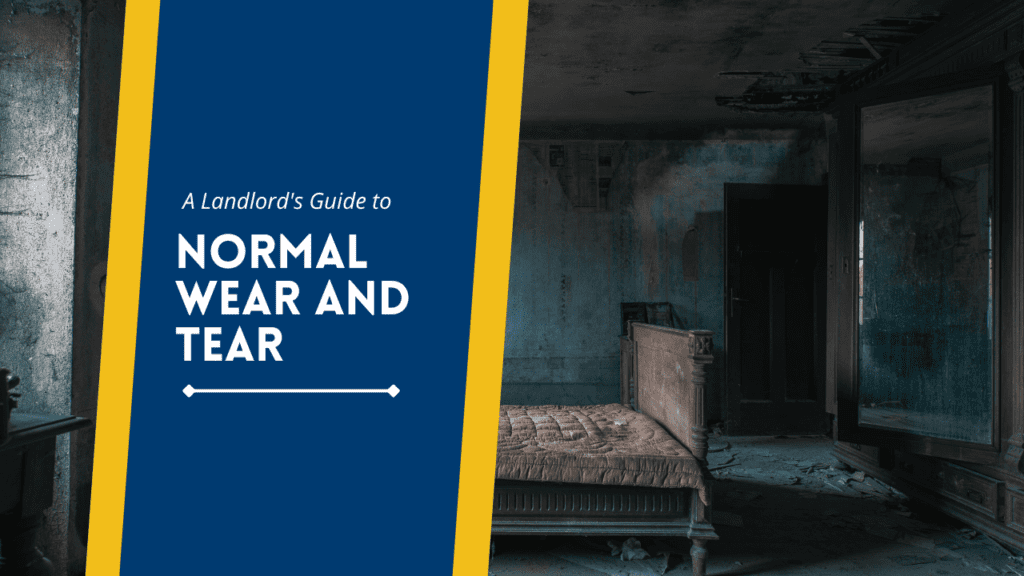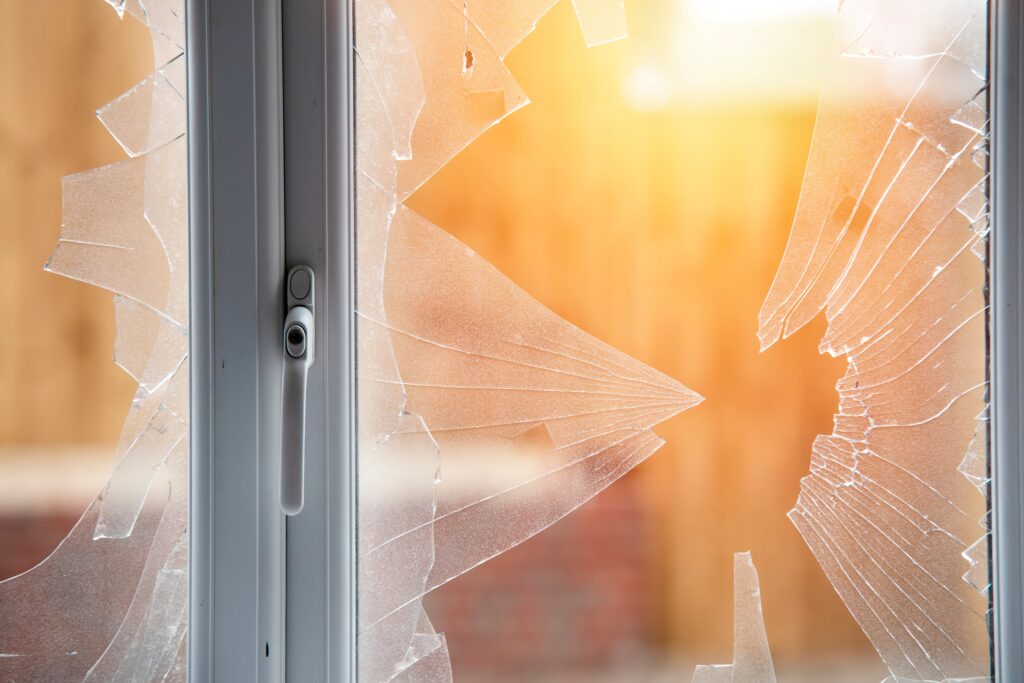
California law allows you to charge a resident’s security deposit for property damage, but not for general wear and tear.
That’s pretty easy for experienced property managers like us. But, for a lot of rental property owners, the difference between property damage and normal wear and tear isn’t always clear.
How do you know what you’re looking at?
Tenants like to insist that everything is wear and tear at the end of a lease term. They’ll insist that some broken item was already broken when they moved in.
On the other hand, landlords will be quick to believe that everything that needs repairing or replacing is due to damage rather than wear and tear.
How can all of this be navigated at the end of a lease term, when you’re preparing to calculate how much of the security deposit is going back to your tenant?
Let’s take a look at what normal wear and tear really is.
Defining Normal Wear and Tear in a Rental Home
Everyone will have their own definition of wear and tear. There’s nothing in writing to distinguish between wear and tear and damage. So, you’ll have to rely on understanding what the courts have generally held to be wear and tear and what they see as damage.
Here’s our best and most qualified shot at a definition:
Normal wear and tear is the natural deterioration that happens to a property
when a person lives in that property.
Normal wear and tear will happen to any home, no matter who is living in it. It happens to your own home as well as your rental properties. Property owners are responsible for it because it’s expected. It’s going to happen even with tenants who don’t leave a huge footprint.
Here are some of the most common examples of normal wear and tear.
- Small nail holes in the wall. Those exist because your residents likely hung pictures or clocks or mirrors on the walls.
- Scuff marks on the walls or in the carpet from where furniture rested. You’ve seen the dark marks even on your own walls, and surely you’ve moved a piece of furniture and seen the dents in the carpet that are there because sofas and beds are heavy.
You can also expect, at the end of any tenancy, to find dirt in the grout or tiles. It tends to gather. There will be notably worn carpet in high-traffic areas. Paint will fade due to age or sunlight. Sometimes, appliances will need to be repaired or replaced just because they’re used every day.
Normal Wear and Tear is Part of Turnover
 As the rental property owner, you will always be responsible for these costs. They are part of the expenses that you plan on when you buy an investment home.
As the rental property owner, you will always be responsible for these costs. They are part of the expenses that you plan on when you buy an investment home.
They’re part of your turnover process.
Make an effort to budget for wear and tear items as it approaches time to turn over your property. When one tenant moves out and you prepare the property for a new tenant, you’ll have to pay for the wear and tear maintenance that’s required.
This is one reason why tenant retention is so crucial. You save money when you don’t have to improve your property every year.
You cannot charge the tenant’s security deposit for normal wear and tear. If you do, there could be legal trouble. Your tenant could take you to court, and unlawful security deposit deductions can result in heavy penalties. Don’t risk it.
Keep in mind that the longer a tenant lives in your unit, the more wear and tear you will encounter after they move out. A one-year tenancy will have less wear and tear than a 5-year tenancy.
When is it NOT Wear and Tear?

How do you know you’re looking at something other than normal wear and tear?
There are some key differences between normal wear and tear and property damage that is caused by tenants. When your rental property is damaged, the repair costs are the responsibility of your tenants, and you can deduct anything owed from the security deposit you’ve collected.
You never want to find damage. It’s not an expected part of the rental process, which is why it’s not treated the same as normal wear and tear. The damage caused by tenants can potentially harm the value, usefulness, or normal functioning of your rental property and its systems.
Damage does not have to be intentional. Even accidental damage needs to be paid for, however, and your residents should be held accountable. This should be explicitly stated in your lease agreement.
Property damage includes:
- Large holes in the walls or floors.
- Changes to the property, such as different paint colors that were not pre-approved.
- Tears, stains, or holes in carpet.
- Water stains on wood floors.
- Broken appliances, doors, or windows due to abuse.
- Missing or cracked bathroom tiles and mirrors.
- Writing on walls, floors, and surfaces.
When you make deductions from the security deposit, you’ll have to provide an itemized list of the deductions. If you decide to withhold funds from the security deposit to pay for damage, make sure you’re able to submit invoices, receipts, and other documentation to support what you’re subtracting.
Value of a Move-Out Inspection
 In California, you’re required to offer your tenants a pre-move out inspection two weeks before they vacate the home.
In California, you’re required to offer your tenants a pre-move out inspection two weeks before they vacate the home.
Not all tenants accept this offer, if they do accept your offer, that’s a good thing. It will help you. You get the opportunity to discuss potential security deposit deductions with your tenants, and you also get an idea of how much work the turnover process will require.
Work with your tenants to schedule an inspection time that’s respectful of their schedule. You’ll want to provide at least 48 hours of notice. Walk through the property with your tenants and make a note of the potential damage that’s found.
Still not sure whether you’re looking at normal wear and tear or property damage? We can help you decide. Please contact us at Krystle Properties, and we’ll help you have a smooth move-out process.



